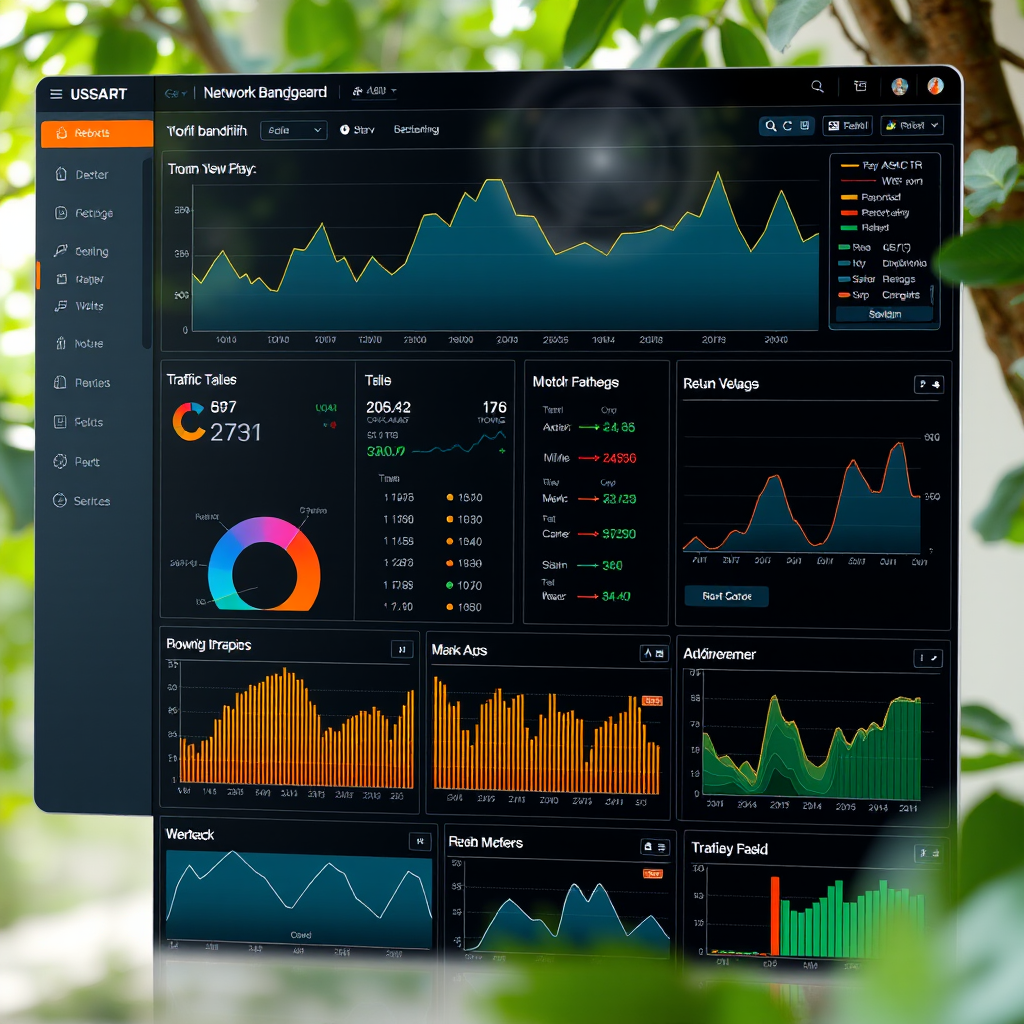Bandwidth Management Strategies for Modern Networks

In today's digital landscape, effective bandwidth management is crucial for maintaining optimal network performance. As organizations rely increasingly on cloud services, video conferencing, and data-intensive applications, implementing robust bandwidth management strategies has become essential for network administrators and IT professionals.
Understanding Bandwidth Management Fundamentals
Bandwidth management involves controlling and optimizing the allocation of network resources to ensure critical applications receive the necessary throughput while preventing network congestion. Modern network utils and sysadmin tools provide sophisticated capabilities for monitoring and controlling data flow across your infrastructure.
Key Components of Bandwidth Management:
- Traffic Monitoring: Real-time visibility into network usage patterns
- Policy Enforcement: Automated rules for traffic prioritization
- Resource Allocation: Dynamic bandwidth distribution based on demand
- Performance Analytics: Historical data analysis for optimization
Quality of Service (QoS) Implementation
Quality of Service is the cornerstone of effective bandwidth management. QoS mechanisms allow network administrators to classify, prioritize, and manage network traffic based on specific criteria and business requirements.

QoS Classification Methods
Effective QoS implementation requires proper traffic classification using multiple criteria:
- Application-based classification for business-critical software
- Protocol-based prioritization for real-time communications
- User-based policies for different organizational roles
- Time-based rules for varying business hours requirements
Traffic Shaping Techniques
Traffic shaping is a proactive approach to bandwidth management that controls the rate of data transmission to prevent network congestion and ensure consistent performance for critical applications.
Advanced Traffic Shaping Methods
Token Bucket Algorithm
Allows burst traffic while maintaining average rate limits, ideal for applications with variable bandwidth requirements.
Leaky Bucket Algorithm
Provides consistent output rate regardless of input variations, perfect for maintaining steady network performance.
Hierarchical Token Bucket
Enables complex bandwidth allocation with multiple priority levels and guaranteed minimum rates.
Fair Queuing
Ensures equitable bandwidth distribution among competing flows while preventing monopolization.
Application Prioritization Strategies
Modern networks must handle diverse application types with varying performance requirements. Implementing effective prioritization strategies ensures critical business applications receive adequate resources while maintaining overall network efficiency.

Priority Classification Framework
Critical
VoIP, video conferencing, emergency systems
High
Business applications, database access
Medium
Email, web browsing, file transfers
Low
Backup operations, software updates
Network Monitoring and Analytics
Effective bandwidth management requires continuous monitoring and analysis of network performance. Modern network utils provide comprehensive visibility into traffic patterns, helping administrators make informed decisions about resource allocation and optimization.
Essential Monitoring Metrics
- Bandwidth Utilization: Real-time and historical usage patterns across network segments
- Latency Measurements: Round-trip times and delay variations for different traffic types
- Packet Loss Rates: Quality indicators for network reliability and performance
- Jitter Analysis: Variation in packet arrival times affecting real-time applications
- Throughput Statistics: Actual data transfer rates compared to theoretical maximums
- Queue Depths: Buffer utilization indicating potential congestion points

Implementation Best Practices
Successful bandwidth management implementation requires careful planning, proper tool selection, and ongoing optimization. These best practices ensure maximum effectiveness of your network management strategy.
Planning Phase
- Conduct comprehensive network assessment and baseline measurements
- Identify critical applications and their bandwidth requirements
- Define clear policies and service level agreements
- Select appropriate sysadmin tools for monitoring and management
Deployment Phase
- Implement changes gradually with thorough testing
- Configure monitoring systems before policy enforcement
- Establish baseline performance metrics for comparison
- Train staff on new tools and procedures
Optimization Phase
- Regularly review and adjust policies based on usage patterns
- Analyze performance data to identify improvement opportunities
- Update application classifications as business needs evolve
- Conduct periodic capacity planning assessments
Maintenance Phase
- Maintain up-to-date documentation of policies and procedures
- Regularly update network utils and management software
- Monitor for security threats and policy violations
- Prepare contingency plans for network emergencies
Future Trends in Bandwidth Management
The landscape of bandwidth management continues to evolve with emerging technologies and changing business requirements. Understanding these trends helps organizations prepare for future network challenges and opportunities.
AI-Driven Network Optimization
Machine learning algorithms are increasingly being integrated into network utils to provide predictive analytics, automated policy adjustments, and intelligent traffic routing based on historical patterns and real-time conditions.
Software-Defined Networking
SDN technologies enable more flexible and programmable bandwidth management, allowing dynamic policy changes and centralized control across distributed network infrastructures.
Conclusion
Effective bandwidth management is essential for maintaining optimal network performance in today's demanding digital environment. By implementing comprehensive QoS policies, utilizing advanced traffic shaping techniques, and leveraging modern network utils and sysadmin tools, organizations can ensure their networks deliver consistent, reliable performance for critical business applications. Success requires careful planning, continuous monitoring, and ongoing optimization to adapt to changing requirements and emerging technologies.